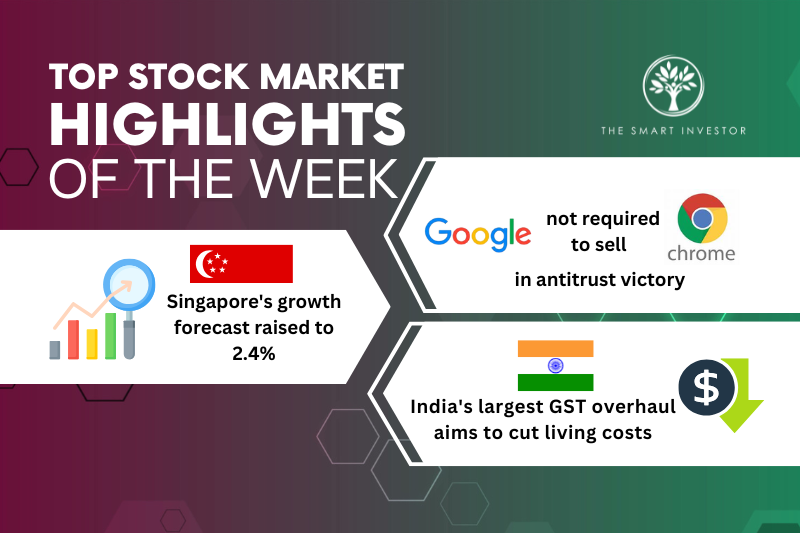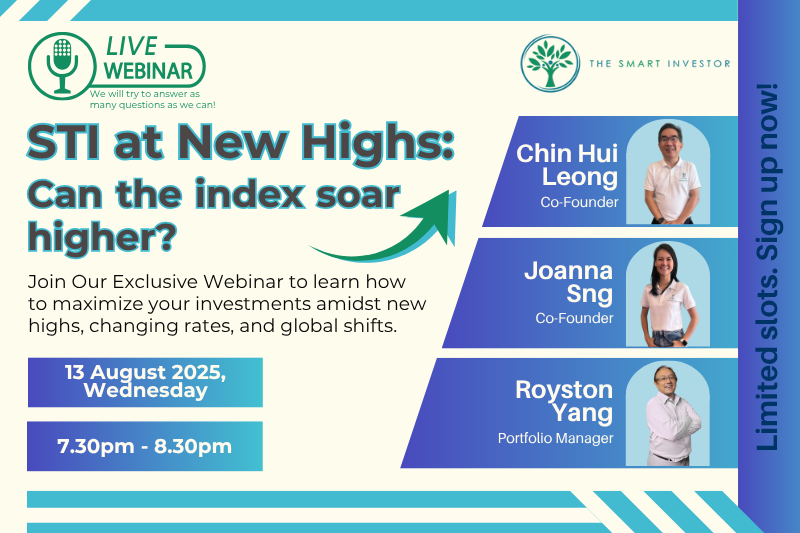Welcome to this week’s edition of top stock market highlights.
Alphabet (NASDAQ: GOOGL)
In a big win for Alphabet, a US district judge ruled that the company will not be required to sell its Google Chrome browser, which provides data to help its advertising business deliver targeted ads.
Last year, Google was ruled to have an illegal monopoly on its core internet search market.
Investors were worried that a judge would force Alphabet to sell its Google Chrome browser, but the latest ruling seems to have avoided the most severe consequences of this antitrust lawsuit.
The decision stated that the plaintiff had overreached in seeking the forced divestment of Chrome.
Previously, it was ruled that Google had violated Section 2 of the Sherman Act and held a monopoly in search and advertising.
In response to this ruling, Alphabet’s shares surged 5% in pre-market trading to hit a new all-time high above US$220.
Alphabet is now allowed to make payments to preload products, but cannot have exclusive contracts that condition payment or licensing.
The company was also told to loosen its hold on search data, with Google having to make available certain search index data and user interaction data.
Both Google and iPhone maker Apple (NASDAQ: AAPL) have a symbiotic relationship.
Google pays Apple billions of dollars a year to be the default search engine for its iPhones, which also enables Google to obtain more search volume and users.
Apple’s shares also climbed close to 4% in pre-market trading at news of this ruling.
Singapore’s GDP growth
Singapore’s GDP growth numbers received a fillip as private-sector economists turned optimistic on the city-state’s economic prospects.
The panel of 20 economists who responded to the Monetary Authority of Singapore’s (MAS) survey of professional forecasters now expect 2025’s GDP to come in at 2.4%.
This growth is much higher than the 1.7% projected during June 2025’s survey, and is also close to the upper end of the official forecast of 1.5% to 2.5% which the Ministry of Trade and Industry upgraded on 12 August.
The improved outlook stemmed from better full-year prospects for sectors such as manufacturing, construction, wholesale, and retail trade.
In addition, these economists also expect monetary policy to ease in October, though just a minority of those surveyed believe this will happen.
The upgrade came after the second quarter of 2025’s (2Q 2025) GDP numbers exceeded expectations.
Economists expected 2Q 2025 GDP to rise by 3% but the eventual figure came in much higher at 4.4%.
Some economists feel that fears of a trade slump in the face of Trump’s tariffs are overstated.
With Singapore facing the lowest tariff rate of 10% among Asian countries, the country could benefit from a diversion in export orders and stronger regional trade flows.
India’s GST overhaul
India is planning its largest goods and services tax (GST) overhaul since the system was introduced eight years ago.
This overhaul is planned because of rising costs that have made life difficult for ordinary Indians to afford necessities.
Indian Prime Minister Narendra Modi mooted this reform plan to make the country’s products cheaper, with tax cuts slated to come into effect before Diwali in October.
The plan is to categorise most products into two GST brackets – 5% and 18%.
This new system will replace the present one, which has four GST categories ranging from 5% to 28%.
Items such as talcum powder, toothpaste and shampoo should see GST rates fall from 18% to just 5%, while items such as butter should see rates decline from 12% to 5%.
For air conditioners and television sets, the rate is set to fall from 28% to 18%.
With lower GST rates, these essential items should become more affordable, thus spurring domestic consumption.
However, non-essential or “harmful” items will see their rates stay high, with some categories such as cigarettes potentially facing a hike in GST rates from 28% to 40%.
This reform should be popular with the masses, but economists are concerned about lower revenue collections for the central and state governments.
In turn, these lower takings could shave off as much as 0.4% of India’s GDP.
Business owners are watching these GST changes closely to see how they impact them, but some opposition-led states are critical of the changes.
Citing potential lost revenue, they prefer that the government provide compensation or allow them the autonomy to raise their own taxes.
Big Tech is spending hundreds of billions on AI, and the ripple effects are just beginning. Our new investor guide shows how AI is changing the way companies generate revenue, structure their business models, and gain an edge. Even if you already know the major players, this report reveals something far MORE important: The why and how behind their moves, and what it means for your portfolio. Download your free report now.
Follow us on Facebook, Instagram and Telegram for the latest investing news and analyses!





